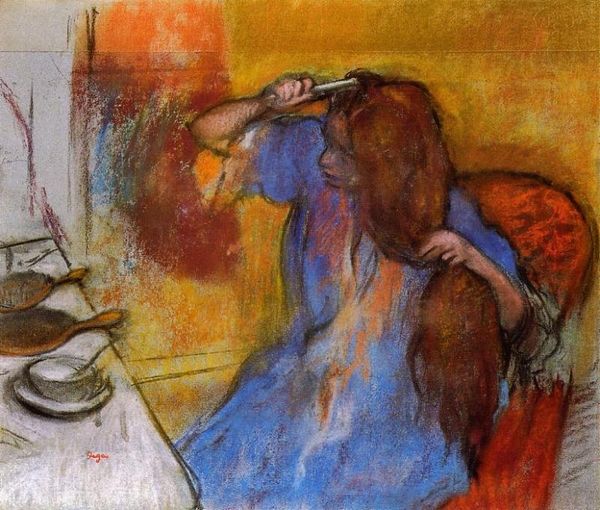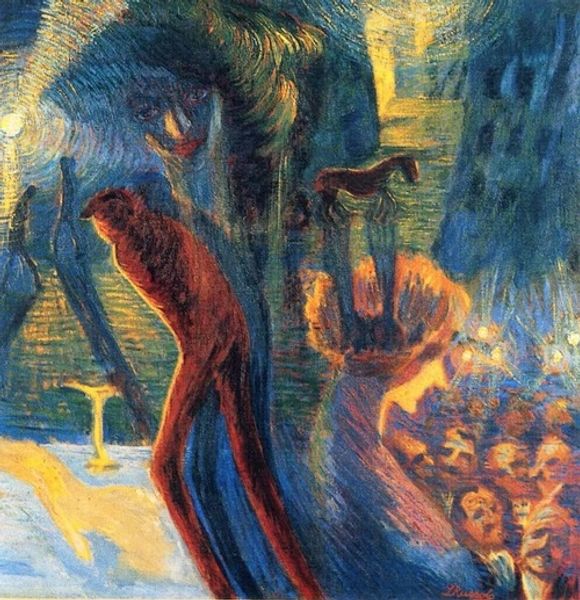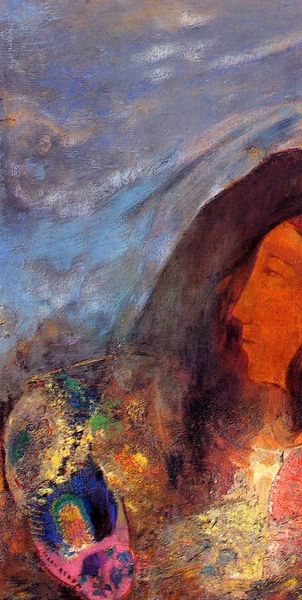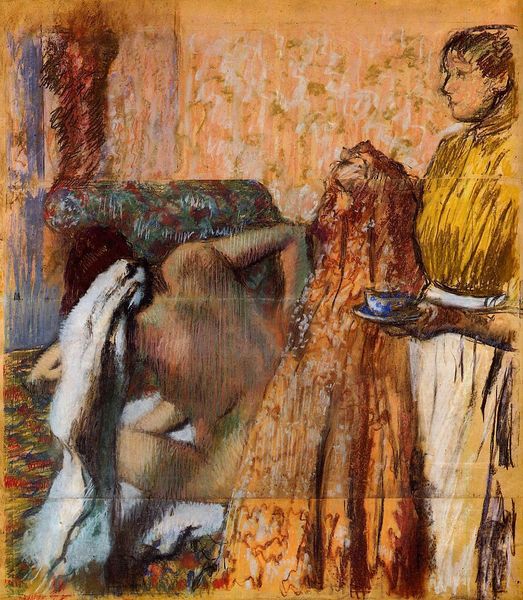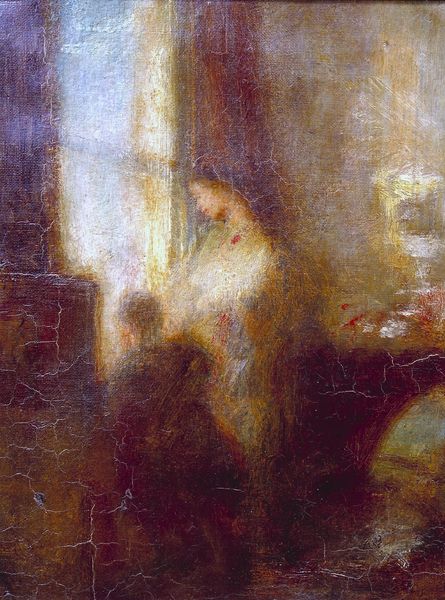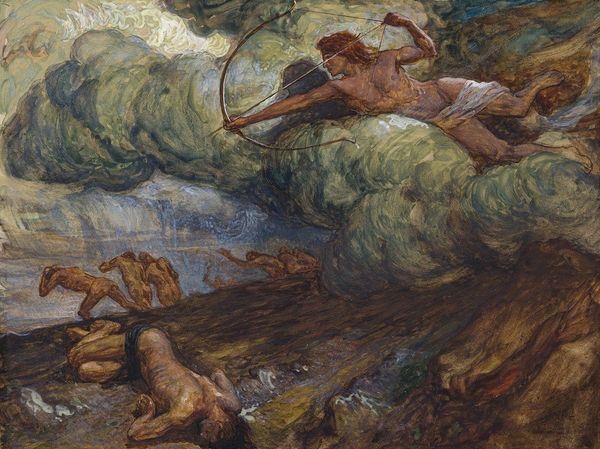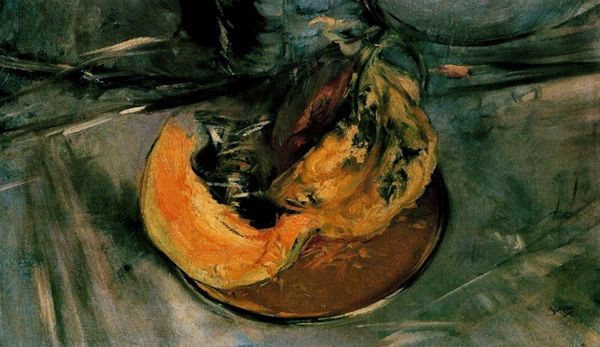
painting, pastel
#
portrait
#
16_19th-century
#
self-portrait
#
painting
#
impressionism
#
oil painting
#
intimism
#
france
#
genre-painting
#
pastel
#
nude
Copyright: Public domain
Edgar Degas made this pastel drawing on paper, titled “At the Mirror,” using dry pigments that have a powdery, granular consistency. Degas favored pastel for its immediacy. Unlike oil paint, there’s no need to mix colors or wait for layers to dry. He built up the image through a process of layering, smudging, and blending the pastels directly on the paper’s surface. You can see the marks left by his fingers. The texture of the paper itself plays a crucial role. The tooth, or roughness, of the paper allows the pastel particles to adhere. This gives the drawing a soft, almost hazy quality, perfectly suited to the intimate subject matter: a woman attending to her toilette. Degas elevates the medium of pastel, traditionally associated with preparatory sketches, to a level of artistic expression on par with painting. By focusing on process and materiality, we gain a deeper understanding of his work, challenging the traditional hierarchy between craft and fine art.
Comments
No comments
Be the first to comment and join the conversation on the ultimate creative platform.


